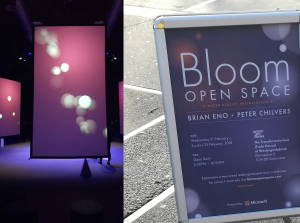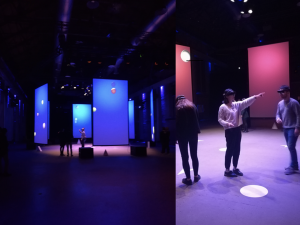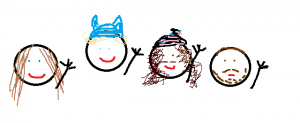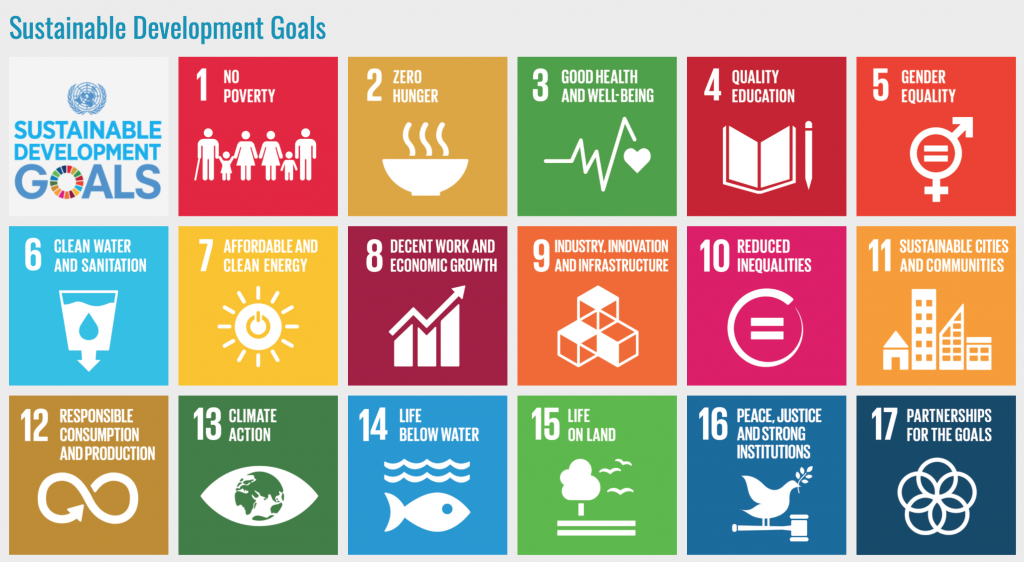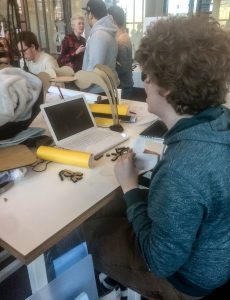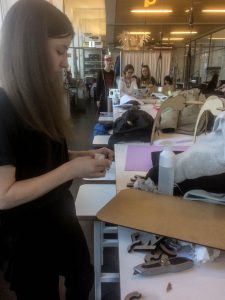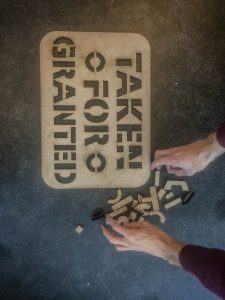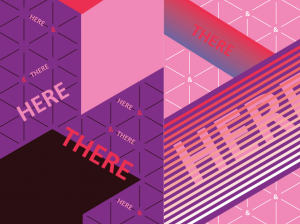summary sprint 1 to 5
Sprint 1
We kinda had a difficult start of the project; we didn’t have a partner to coöperate with and we had to find a relevant problem to solve during our project. The first sprint our sprintgoal was:
Visualising a synthesis of motivational theories (for varying age groups), drawing parallels with present tech in therapies.
We did a lot of research to motivation, gamification for therapy and technology used for physical therapy. After a few days of research we all came together and shared our findings. We tried to find parallels between motivational theories and existing tech in therapies, but we couldn’t really find clear parallels.
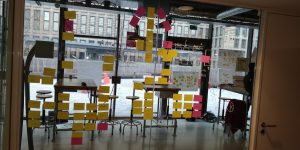
Trying to find parallels between motivational theories and existing tech for therapy
The findings on motivational theories and sources we used are presented on a website we made: https://hnt.soaringnetwork.com/
Sprint 2
The sprint goal for sprint two was:
Identifying the target group, it’s surroundings, and the current applied therapies for it, translating the same into a visual synopsis.
The biggest task this sprint was to find a problem. We still didn’t really have a partner during this sprint, but we had contacts with Antoinne, a movement scientist from the HvA. He tried to help us with finding a problem and took us on a tour through the HvA movement department. The problem we had in mind was to help children with a temporary physical disablement, like a broken arm. However, we found out (thanks to Antoinne) that this isn’t actually a problem, since those kids see improvement of their injury quickly and thus are really motivated to do their therapy exercises. We felt stuck, because we were already nearing the end of sprint 2 and we still didn’t have a problem to solve. Luckily at that moment our coach Tamara came to us with the good news that she found us a partner! From that moment on we are working together with Simba, a project from the HvA that’s trying to develop a game to make asthmatic kids move more.
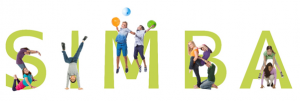
After we found this out we did some research to why asthmatic kids don’t move and we also got research results from the SIMBA team that were really useful. We also did some research to Nintendo, since they are trying to make gaming more physical and we are trying to achieve kinda the same.
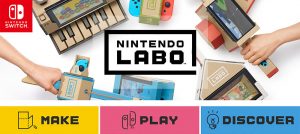
Nintendo is making games more physical on a whole new level with Nintendo LABO
Sprint 3
This sprint we really wanted to start making something and start thinking of a concept for our prototype. The goal of this sprint was:
Designing a concept-prototype game to motivate kids to move outside.
We spent our time mostly on brainstorming about what we want to prototype this project. We came up with a lot of idea’s!
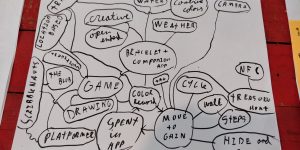
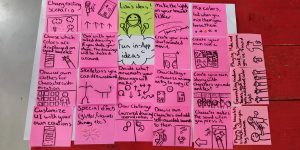
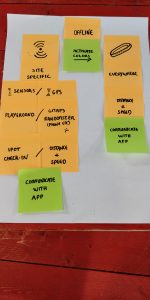
One product that was the major inspiration of our idea, were the shoes that light up when you move. From that idea we came up with the idea to make a bracelet that lights up with colors you collect when you move.
The hand wearable acts like a bright mediator in this delightful interaction between the digital and the physical
world — run for colors, share and play.
The wearable gives visual feedback on the progress and the bright hues motivate in want of more!
The wearable intends to become a part of a kid’s everyday life, adding meaning and richness to movement. An artifact he/she falls in love with and prides in the collection of hues.
Next to the bracelet, we would have an app. Whenever the kid would come back at home, they could share their progress with the companion app, which would register the collected colors on a day.
The companion app should extend the outdoor experience, collecting, mixing and using colors in
a stimulating workshop environment.
The progress cycle would look like the following:
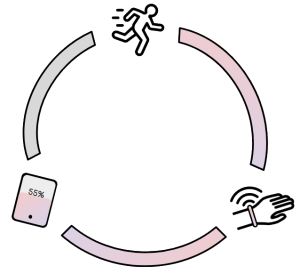
1. The kid moves to collect colors
2. The bracelet collects colors and lights up.
3. The phone would show the progress and allow you to spend the earned colors.
Sprint 4
In this sprint we further wanted to define our product, what it does, how it does it, and why. Our goal was:
Designing and testing the ecosystem of a hand wearable with a companion app.
After working on the idea a lot, we decided we weren’t completely sure on the execution on the idea, and tried to go in a different direction.
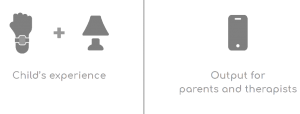
We brainstormed an idea where instead of creating a fun game on the phone, to show off the reward. We instead have a lamp that lights up with the colors you had collected during the day. While parents would be able to check statistics off their kids on the app.
One major flaw we however realized was that by doubling the feedback from the bracelet, it could end up turning repetitive.
By clearly splitting deliverables into the three users, children no longer use the app, thus reducing
screening time.However, doubling the same feedback possibly results
in a redundant experience. Furthermore, investigating and testing the lamp’s likability for children at this point of the project is unlikely feasible.
And so we went back to our idea of app + bracelet, this time however we were were gonna stray away of the idea of doing too much in our app. We wanted the app to be a constructive reward for their movement, not a distraction at the end of the day that would result in sitting around for hours.
Thus we came with the idea of Chasing Colors as it is right now. Instead of playing a game at the end of the day, the colors you’ve collected throughout the day would collect themselves inside of a digital painting. This painting would slowly fill up over time, creating a nice experience where you can see your progress over the course of a few days or even weeks.

Moodboard for the Digital Paintings

The movement is mapped would be based on how vigorously the kid is moving, where the colder colors would be earned by lesser movement while you’d get shades of red for moving vigorously.
Sprint 5
In sprint 5 we further developed our idea, and start work on a prototype.
Creating a physical prototype of the color collecting bracelet with a companion app and test the components.
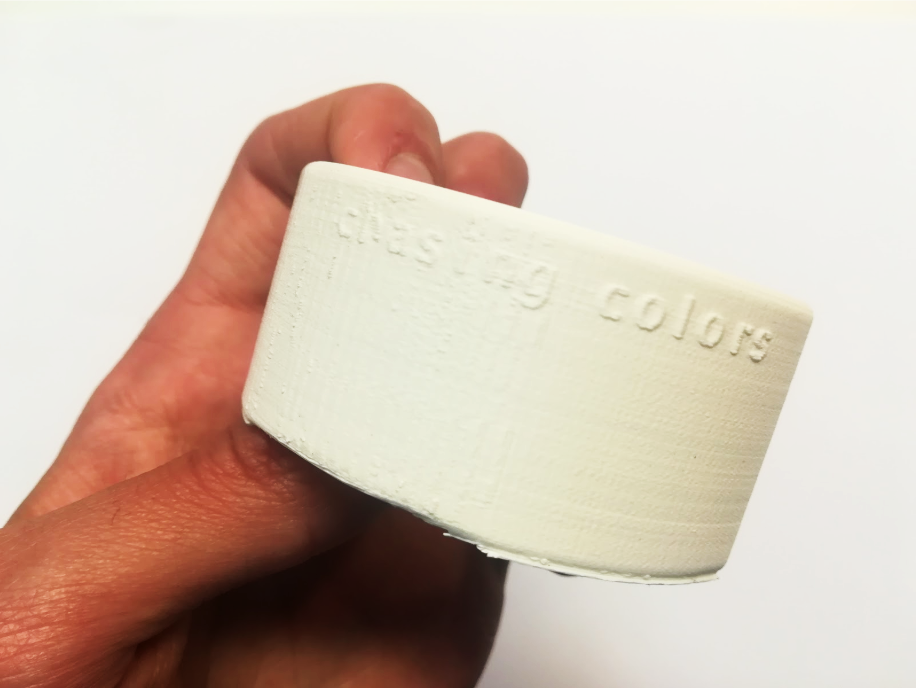
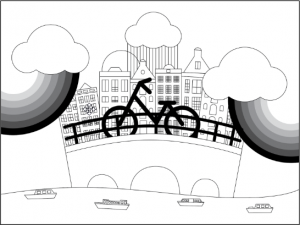
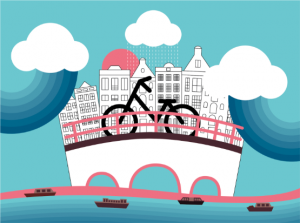
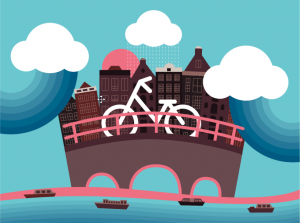
During this sprint we 3d printed a bracelet prototype and drew up a painting to be used in the app. Next to working on the User Interface & Experience for both kids, parents & therapists.
Now it is upon us in the last and 6th sprint to finish up our bracelet prototype, the User Interface and prepare for the expo.







